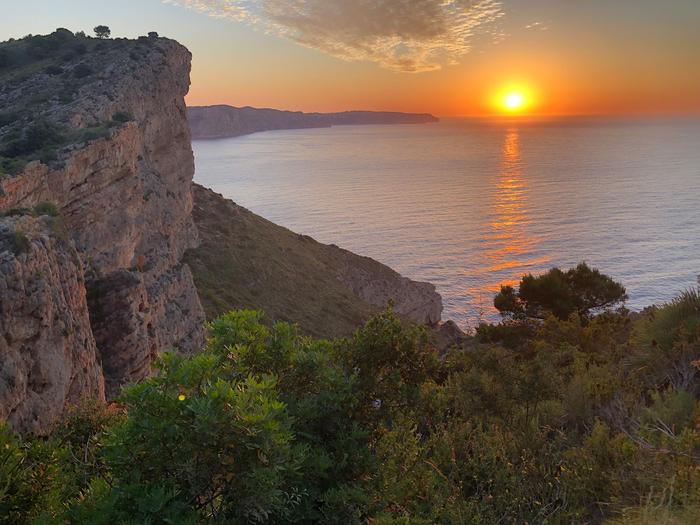Understanding the complex transition from hunting and gathering to agriculture marks a significant point in human evolutionary history. This transformative period, often attributed to numerous external environmental and social factors, has been the subject of extensive research and debate. Central to this discussion is the conundrum of whether early agricultural practices arose independently in various populations or if they emanated from interactions between previously established hunter-gatherer societies and burgeoning agricultural communities. New research delves into this pivotal moment in our past, emphasizing the active role that humans played in facilitating these shifts rather than framing them as passive participants in global historical changes.
A study led by evolutionary anthropologist Alfredo Cortell-Nicolau from the Max Planck Institute for Evolutionary Anthropology and the University of Cambridge offers a fresh perspective. The research team employs an innovative ecological model to explore the nuanced interactions between hunter-gatherers and farmers, likening farmers to ‘predators’ and hunter-gatherers to ‘prey’ in this anthropological ecosystem. This analogy provocatively repositions traditional views about the relationship between these two groups. The model accounts for various dynamics, including group migration and the assimilation of cultures, which significantly aid in understanding how population dynamics influenced the adoption of farming practices.
Key to this research methodology is the utilization of radiocarbon dating, which serves as a demographic proxy to infer population sizes in prehistory. By analyzing organic materials dated through this technique, researchers can glean insights into the existence and size of populations over time. The application of statistical fitting to these radiocarbon records allows for a more nuanced understanding of historical demographic dynamics. As co-author Enrico Crema elucidates, this model not only enriches archaeological narratives but also posits a framework for comprehending how various variables correlate with observable records from the past.
The research does not merely hinge on theoretical modeling; it directly investigates specific geographical instances, applying its approach to exploratory case studies across eastern Iberia, Kyushu Island in Japan, and Scandinavia. These varying locales offer distinct lenses through which to examine the implications of the purported competition and cooperation between hunter-gatherers and early farmers. The findings highlight how diverse factors, including differential population growth rates and mortality influenced by farming encroachments, shaped the agricultural trajectories in these regions.
As the research unfolds, several intriguing discoveries emerge that challenge existing theories regarding agricultural expansion. The significance of a territorial versus maritime mode of agricultural diffusion reveals the complex layers of interaction between diverse groups. Javier Rivas from the University of Bath notes that the methods used provide a platform for exploring not only how agriculture spread, but also how social structures and migration might have contributed to these transitions. The interaction of cultural assimilation along with migration is proposed as a crucial element in understanding how farming was adopted across different societies.
Adopting this ecological modeling approach expands the archaeological toolkit significantly. By addressing the gaps in our understanding of prehistoric societies, researchers offer insights into the ways in which demographic growth influenced social structures and historical events. The interconnectedness of various groups during this transition is crucial to further unraveling the intricacies of human development. The nuances of agricultural dissemination, whether through conquest, trade, or mutual benefit, reveal the complexities of cultural evolution in ancient societies.
The potential of this research extends into future endeavors, where the team seeks to enhance their model by incorporating more intricate variables, broadening its application to larger and more diverse populations. The hope is that these methodologies will not only refine scholarly understanding of the agricultural transition but also inform ideas about similar dynamics across different historical timelines and contexts. By laying the groundwork for such extensive applications, this study contributes foundational knowledge for future inquiries into the shifting paradigms of human existence.
In essence, the study reveals that early farmers were not merely aggressive conquerors seeking to impose their way of life upon hunter-gatherers. Instead, they were active participants in a complex web of demographic interactions characterized by both cooperation and competition. This nuanced view challenges the binary conceptualization of hunter-gatherers versus farmers, illustrating the intricate dance of adaptation that defined human evolution during this crucial period. The richness and complexity of early human societies underscored by this research will undoubtedly fuel future scholarship aimed at unpacking our shared history.
In conclusion, as mankind reflects on its origins, understanding the multifaceted interactions between hunter-gatherers and the first farmers becomes increasingly vital. The implications of these early relationships rippled throughout subsequent human history, affecting social structures, cultural evolution, and even the environments in which these populations thrived. As we endeavor to incorporate these findings into broader discussions about humanity’s past, it is clear that the transition from foraging to farming was far more intricate than previously believed. This rich area of research continues to foster curiosity and exploration, as scholars remain dedicated to unraveling the depths of human experience through the lens of these relationships.
Subject of Research: Demographic interactions between the last hunter-gatherers and the first farmers
Article Title: Demographic interactions between the last hunter-gatherers and the first farmers
News Publication Date: 31-Mar-2025
Web References: DOI Link
References: Proceedings of the National Academy of Sciences
Image Credits: © Oreto García-Puchol
Keywords: agriculture, hunter-gatherers, demographic interactions, prehistoric society, ecological modeling, population dynamics, cultural assimilation, early farming practices, radiocarbon dating, social structures, agricultural expansion, human evolution




